3 different magazine one-shots doing well in the newsagency
The first one has been sought after while the second has been a good impulse pitch. For the third it has been a matter of connecting with the target audience.
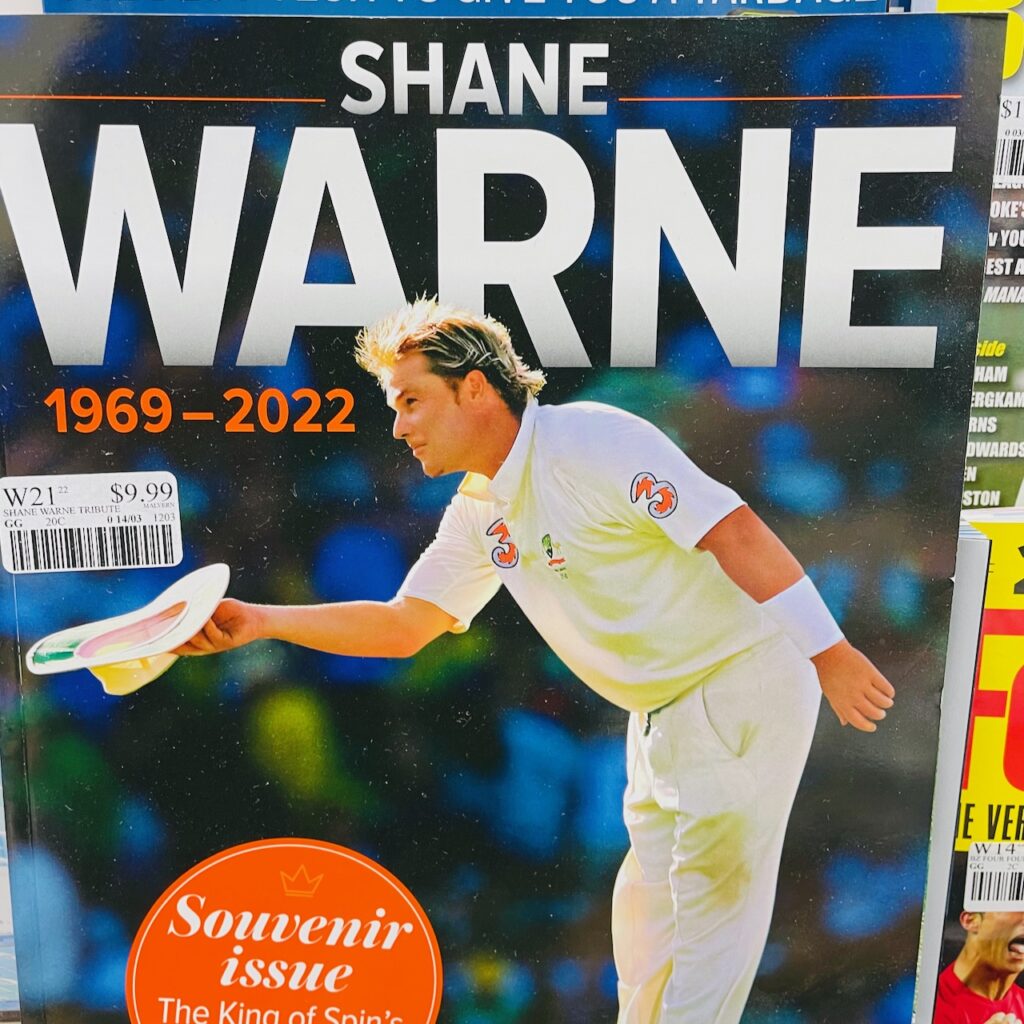


The first one has been sought after while the second has been a good impulse pitch. For the third it has been a matter of connecting with the target audience.



My POS software company as a track record of service=, helping retailers detect and address theft – customer theft and employee theft. This includes work in0-store, with police, with prosecutors and in court as expert witnesses. This new video from a few days ago is designed to alert retailers to opportunities for detecting and addressing theft.
I think it is important for retailers to promote new cards on social media. It is rare that newsagents do this, which feeds into the narrative of no, I won’t buy cards there because they are old.
We regularly pitch new cards to remind people of the regularity of change. I think it is a key reason for above average year on year sales growth in the category.
We use photos and quick to make videos, like this on from a few days ago.
This video was made for no cost, using an easily accessible tool. If that feels too hard, at least take a photo of a new card that you like and mention it on social media. That type of post is more valuable than one pitching any lottery product or mass market magazine.
The new shop we took over in Malvern Victoria needs re-carpeting. We did some investigation under the existing carpet and sought professional advice. Given the age of the building, the multiple layers of flooring underneath, including some challenges, we decided to close from Friday through to and including Monday.
This closure allows the whole shop to be done properly and safely for all. Safety is the key here, given what is under the floor.
We have been letting customers know in-store an online. here’s the note we have provided:
News from newsXpress Malvern.
We are closed from 5pm Friday March 11 until 7am Tuesday March 15 so that we can replace the carpet in the shop with new carpet. This is a big job and the safest way to do it for our customers, employees and tradies is to close.
We apologise if this inconveniences you, but, safety is important.
Since we bought this business 12 weeks ago, we have made some changes. You might have noticed the new card wall and the new range of cards. New carpet is the next step.
We are also adjusting where we place the newspapers so we can introduce some gifts we think our customers will like.
Our commitment is to offer you the best range of magazines you’ll find in Melbourne, a wonderful range of cards, gifts you’ll love to give and stationery for home, and work.
Thank you for shopping with us, and sorry about being closed for 3 days.
Take care …
Guy and your newsXpress Malvern team.
This shop was in the same family for close to 40 years. We are being careful to not make big changes all at once. Last week it was the card wall and range of cards – all new. This weekend, it is the floor. Next, it is walls and the counter area. In a few months we will start to tackle the main shop floor fixtures.
Before we started any of these changes, we edited what was there, removing ice creams, drinks and everyday confectionery, while at the same time expanding the stationery offering. All of this done based on data.
We have a tight budget. Our approach is frugal, because we know every dollar spent has to be recovered.
While Ryan Petersen, CEO of Flexport, a supply chain tech platform, posted this video of him buying copies of a magazine with him on the cover to note him not being noticed, I share it here because I, strangely, found it fascinating watching the transaction in the bodega, a convenience store, particularly found in New York. Beyond the transaction itself, it’s interesting to see what’s at the counter, so cluttered. And, I suspect this shop also sells lottery products.
It’s so hard to get noticed… pic.twitter.com/OYiQnPtPkP
— Ryan Petersen (@typesfast) March 10, 2022
I was talking with a newsagent recently about their first purchase of home furnishing products, two tables for their shop, for displaying product. The tables cost $450.00 wholesale each. The day they unpacked the two tables and put them on the shop floor two separate customers asked how much. Without thinking, the newsagent said $1,195.00. each table was sold that day.
That was five years ago.
Today, that newsagency does $120,000 a year in gifts and $75,000 in home furnishing products. The average GP% for each category is 60%.
The story reminds me of several general truths the it comes to retail:
I was thinking about these things when I shot a video recently in which I talked about opportunities outside of traditional seasons. While Mother’s Day, Father’s Day, Valentine’s Day and similar are valuable, it is what we create for ourselves that is more valuable.
This is true in terms of what we sell. Today, there are more success opportunities outside of what we have traditionally seen in newsagency businesses, and, often, those success opportunities reveal themselves when we are not expecting it.
My point is, play outside what has been traditional for you and embrace where it takes you … don’t be constrained by the shingle and what you think it means.
The Herald Sun is having a rough time at www.productreview.com.au. Here are some reviews from the last couple of months, which I share as some speak to comments made by others here about newspaper deliveries:
Herald Sun has become a Lazy Journalist paper and full of advertising, which I know results in $$$ made. However, a lot is going on in the world. Doom, gloom and misfortune seems to be your story line. $2.50 for that?
Don’t think so……
I signed up for digital and hard copy of the Herald Sun for Fathers Day September 3rd 2021. Still haven’t received a paper, six months!!! Ring them every few weeks achieves nothing. Last time it was suggested to cancel and start again so we did. Now they tell me I have only missed 2 weeks! What do you do?
…
I spent 30 mins on hold just to cancel in this day and age a simple cancel now button would do without talking to someone who just tries to play marketing with you
…
Frustratingly poor poor service, very very disappointed.
From the 14th of February 2022, the Heraldsun changed delivery agents after which I have received only three newspapers in nine days for a seven day delivery customer..The above is fact.
I have telephoned their number six times and spoken to helpful people who are sympathetic to our complaint but can only escalate the issue.
It seems that management does not care or bother to get involved personally.
For a customer who has paid in advance, not receiving the product that has been paid for is very annoying and frustrating.
…
You should be embarrassed
I have had my papers home delivered for over 5 years from my local news agent without a single problem.
Since the Herald sun took over the deliveries in December 2021, I have had nothing but problems.
Incorrect invoices, no deliveries , late deliveries and incorrect deliveries . There has not been one part of your service that you managed to get correct in the past 3 months.
After 3 emails and numerous phone calls, it is still not working .
I am now attempting to cancel my subscription but you have obviously set up your web site to make this as complex as possible.
DO NOT SUBSTITUTE TO THIS SERVICE…
Very easy to subscribe, very hard to cancel
Frustrating that in a digital age you have to call to cancel your subscription however it is super easy for you to subscribe online. I was on hold for over 20 minutes to try and cancel. Not a good service.…
Home delivery of newscorp papers
After many years of being a loyal hone delivery customer they’ve change delivery service and haven’t been able to deliver the paper to us. After complaining to newscorp the driver put a rude obusive note in the letterbox. We’ve been promised a free paper for the month, then they charged our credit card. Absolutely hopeless and not worth the hassle dealing with them.
And this is from customers. The frustration experienced by newsagents who are approached by former home delivery customers about missed papers and other issues they are unable to fix in the new distribution model pursued by News Corp. What a mess! Customers are frustrated. Newsagents have their time wasted.
In data just released, plush sales in Australian toy retailers in January were up 19% on last year, making the category a stand out among toy categories.
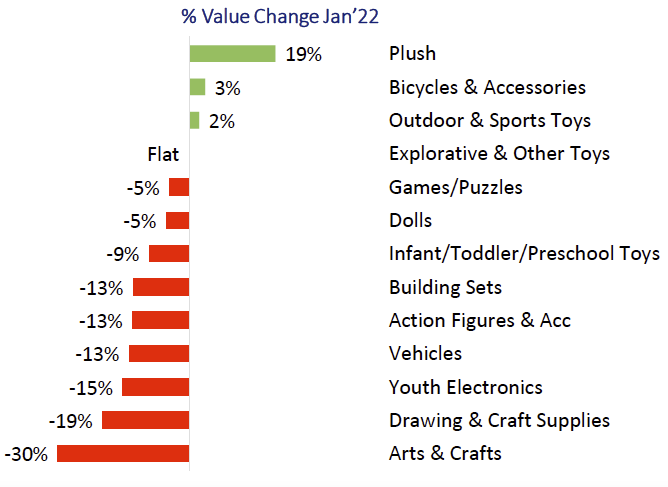
This is a terrific result for retailers in this space.
Now, for those wondering, plush is a broad category. It includes squishy, traditional bears, licences products as well as the everyday plush characters.
In a typical newsagency, less than a square metre of space can generate $15,000 or more year in revenue.
When suppliers give away signs and offer to install them, years later we can see why. This is a photo from a shop that has been empty for years. A key principle of marketing is to have your brand seen.
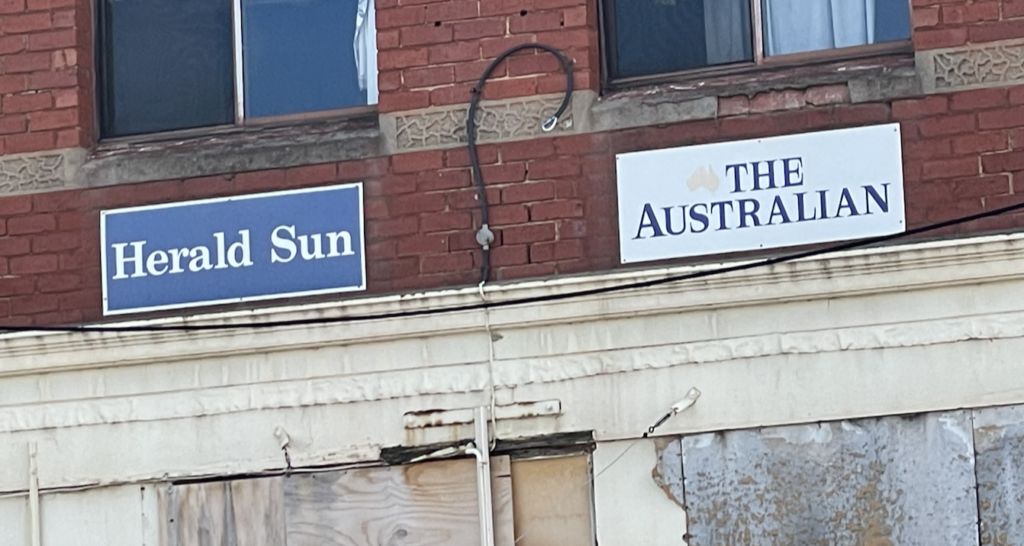
Are Media has announced its acquisition of the Hard To Find business. Hard to Find currently attracts 148,000 visitors (shoppers) a month. They dominate online for gifts:

The acquisition places Are media as a direct competitor of any retailer in the gift space, including newsagents.
While I get that Are Media needs to do what is best for its shareholders, they need to understand that this decision does make them our direct competitor. Anyone who says otherwise is ignorant. While the company has other e-commerce platforms, Hard To Find is on the mainstream online, it comes up in top search results.
Yes, I understand that it is a marketplace, driving traffic for other businesses that actually do the fulfilment. But, that is not how an online shopper sees they business. When they click add to basket, they are buying from Hard To Find.
Click here for the story from Mediaweek about the acquisition:
Are Media has announced the acquisition of Hard to Find.
The acquisition of the Australian e-commerce business significantly expands the media company’s existing content commerce capabilities, strengthens its revenue diversification strategy, and leverages Hard to Find’s market-leading technology to engage audiences even further with Are Media brands and content.
Hard to Find is an award-winning premium product marketplace, celebrating fun and innovative designs from the best small creative Australian businesses.
Founded in 2008 by former media executive Erica Stewart, the site brings an expertly-curated community of product designers and artisans together with discerning consumers looking for something different, creating a more personal maker-to-customer shopping experience.
Are Media CEO Jane Huxley said: “This acquisition adds new e-commerce capabilities to our broader business and allows us to amplify the success of Hard to Find, introducing audiences who are already inspired by our content and enticing them to take the relationship with trusted, authentic brands that one step further.
“I’m excited to welcome Hard to Find into the Are Media stable and particularly pleased that Eri will be joining our business to continue to lead the evolution of Hard to Find. She brings a wealth of experience and proven success in e-commerce that will help drive our future ambitions in content commerce.”
Hard to Find joins Are Media’s established and category-leading digital brand communities, including beautyheaven, trusted by 96% of its audience, and Bounty Parents, supporting parents and parents-to-be for more than 35 years.
What frustrates me about this is that Are Media splashes cash on this acquisition while refusing to make meaningful progress on poor commercial arrangements with newsagents for its magazines:
And, now, we can add that Are Media owns a business that directly competes with us for gift related sales.
Final word: if you think I’m saying they should not have acquired the business … I am not saying that. rather, I want Are Media management to be more respectful of newsagents and this acquisition story is an opportunity to make this point.
Unfortunately, newsagents are still encouraged to create magazine displays to chase a cash prize, and supermarkets are still paid for premium shop floor placement.
It’s tactical placement that drives impulse purchases of a magazine. Af for traffic generation, displays pitching special interest or niche titles provide more value than displays for mass weeklies or monthlies.
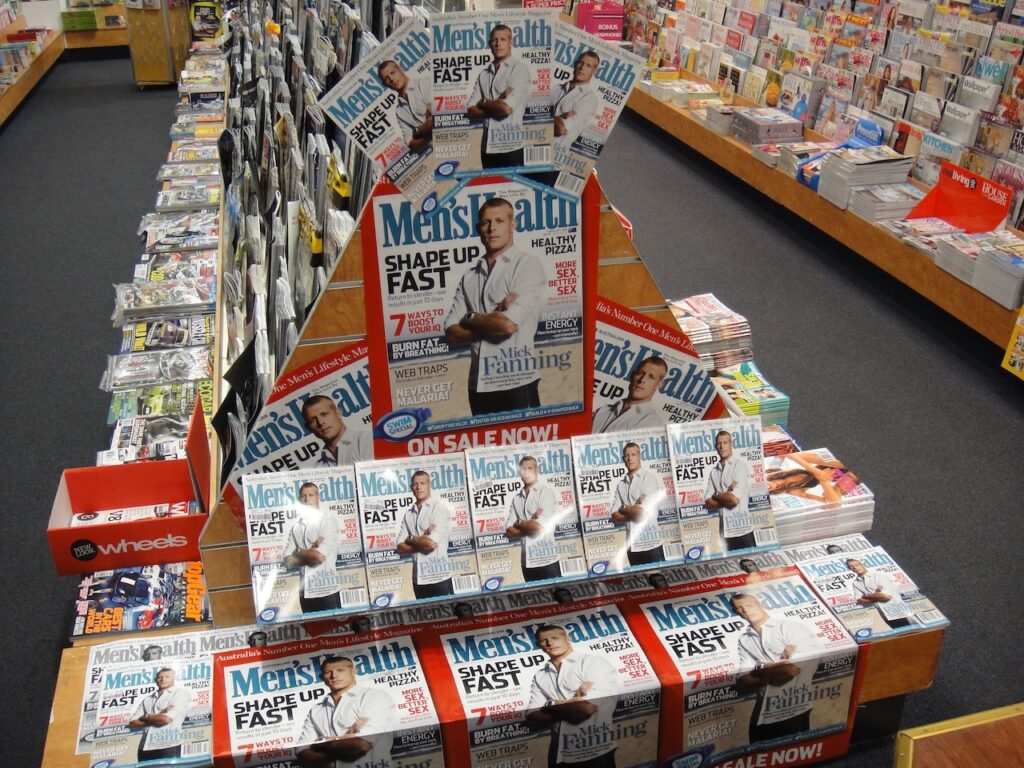
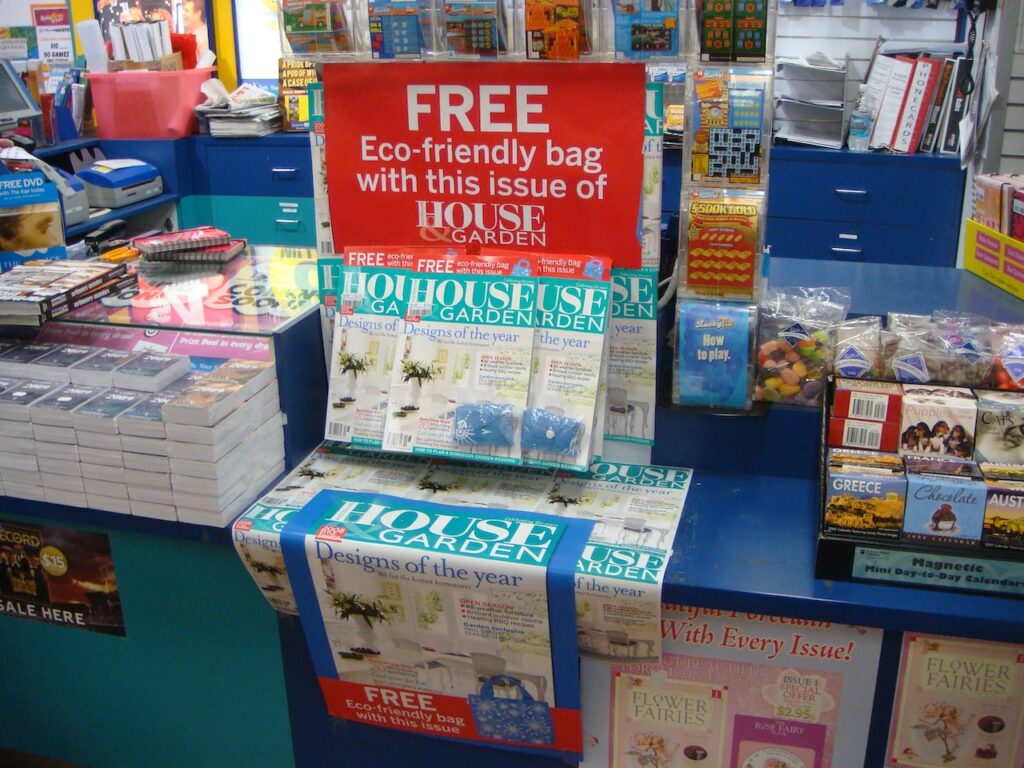
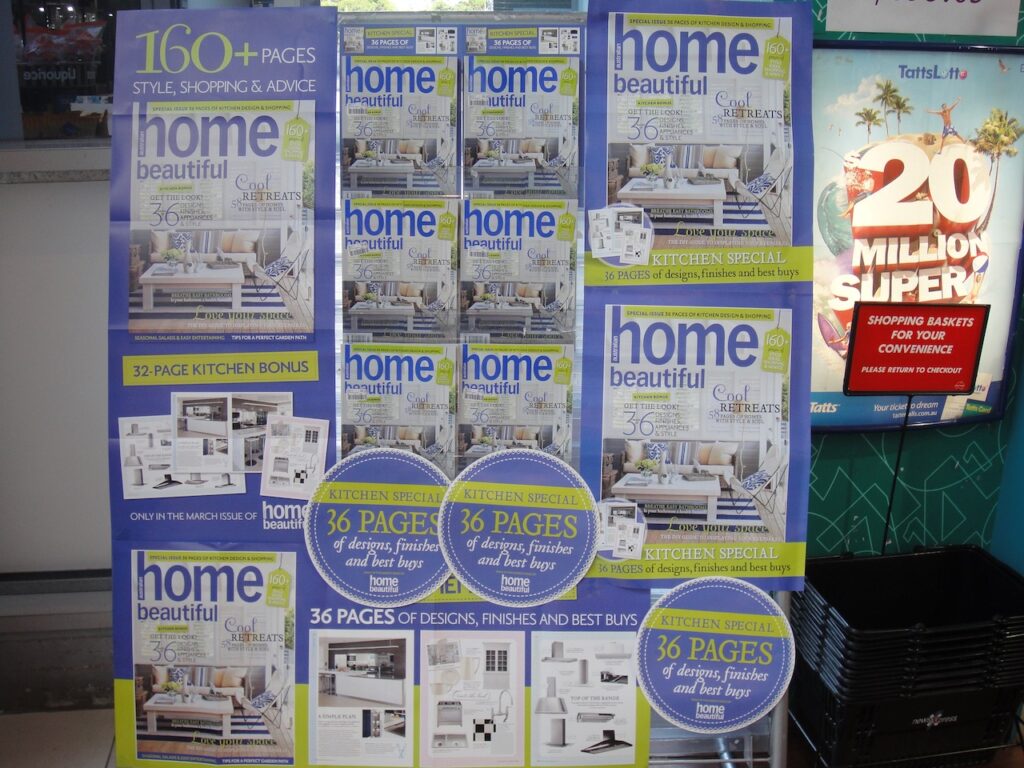
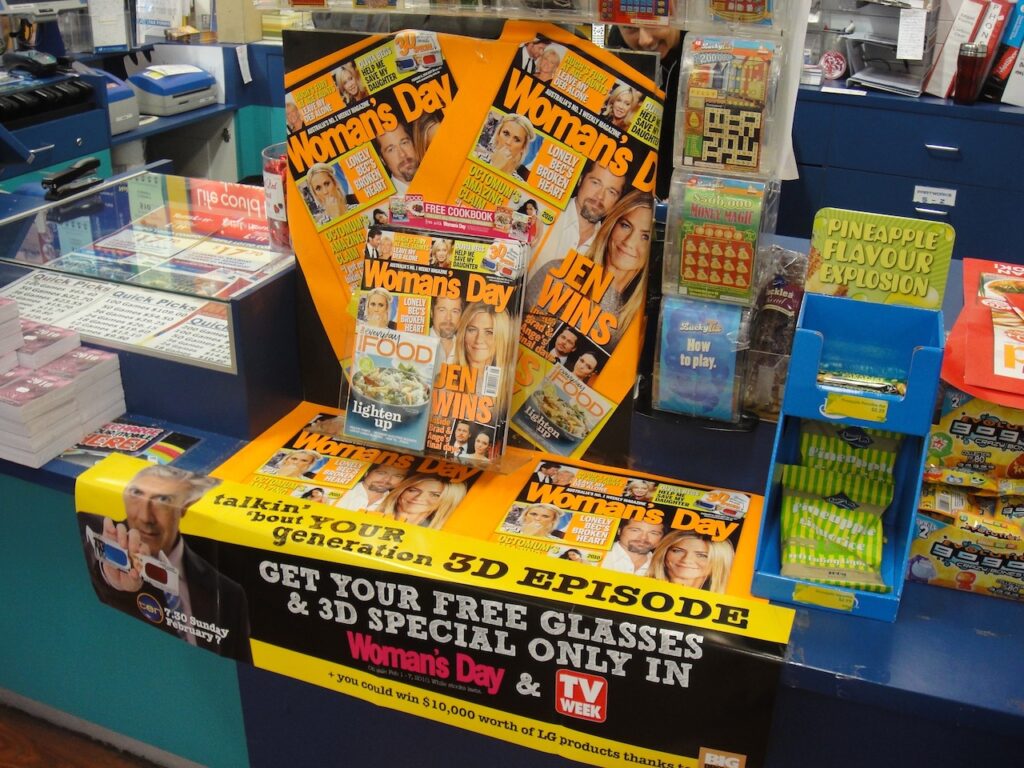

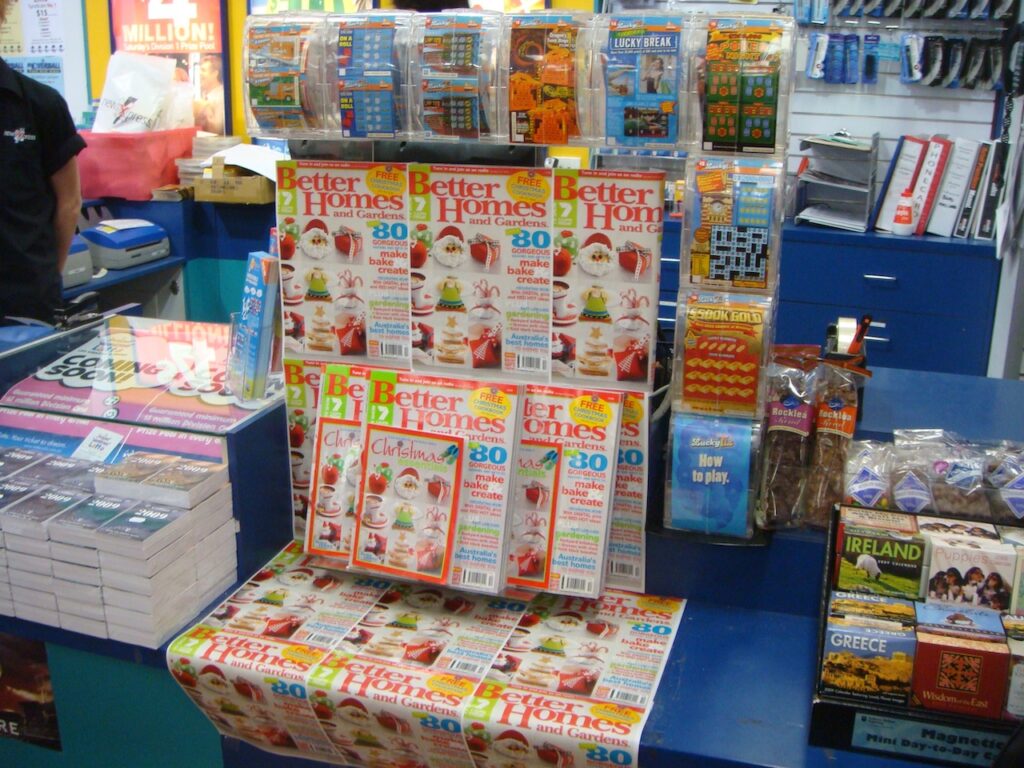
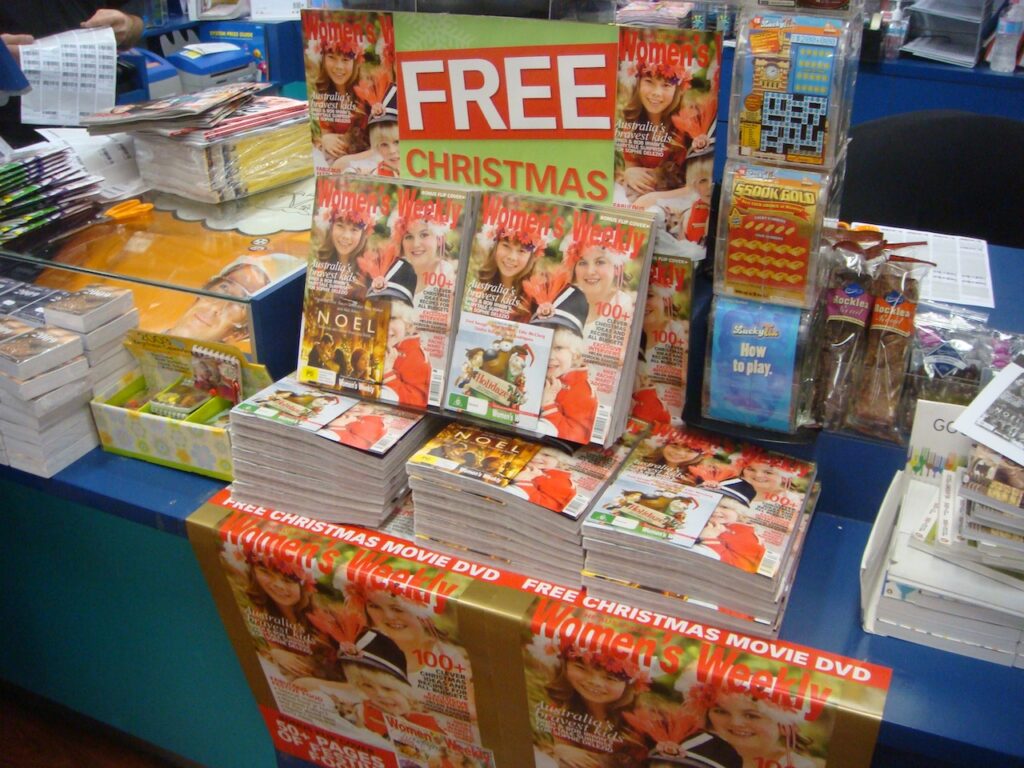 –
–
It took me 5 or so minutes to make this social media post. It has worked a treat not only attracting social media engagement, but, in-store too.
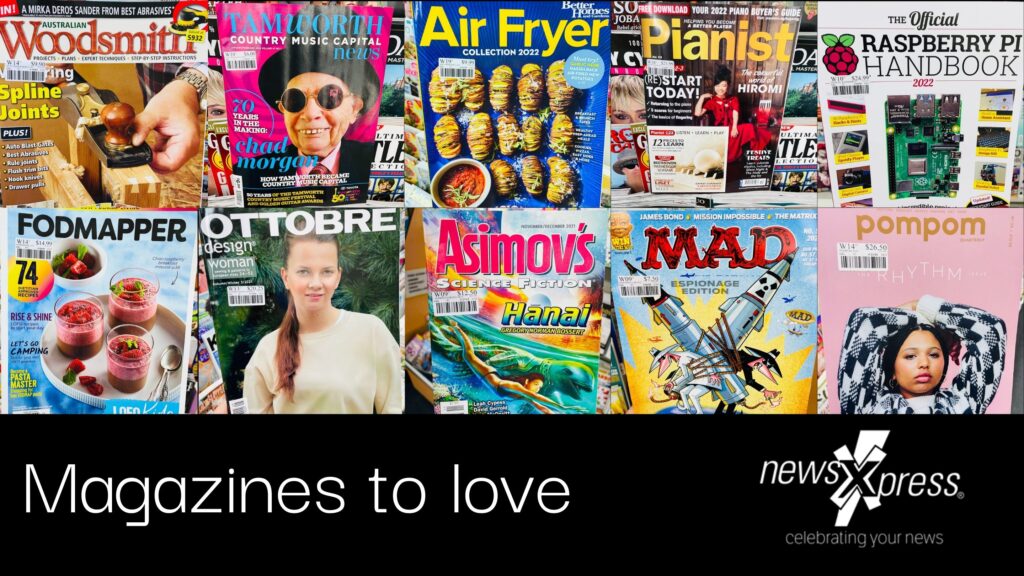
There is no doubt we get more traction from promoting special interest titles than high volume weeklies and monthlies.
SPECIAL EDITION: The cricket world is in mourning after the sudden death of one of its greatest ever players, Australian leg-spinner Shane Warne, aged 52. Read here > https://t.co/P3rWU5eiNh pic.twitter.com/DxvqHupyoW
— Herald Sun (@theheraldsun) March 4, 2022
It’s an easy complaint to make – my merchant fees are going up, it’s not fair, time for me to consider another supplier.
Okay, yeah, that’s an easy take. It’s a cheap shot by me to call it out. But, let me explain and explore it with you.
My advice is to look at your data first.
I’ve looked at hundreds of thousands of baskets from many retail businesses.
The most common reason merchant fees are increasing is because of more sales transacted using EFTPOS.
While sometimes the actual fee basis, flat fee per Tx or percentage, increases, this is rare.
Yes, the most common reason a retailer paid more in merchant fees last month than the month before is because more transactions were paid for on a card.
So, the EFTPOS provider is not the cause of the issue.
Newsagents in some marketing groups have access to preferential rates that see them paying the lowest fees in the country.
But, that addresses only the base cost.
To address the growing cost to the business, of people using a card to pay, you need to be an engaged retailer. Here are some ideas:
It’s easy to kick a bank over EFTPOS fees. But … before you do that, look at your own behaviour. Here are common points in retail businesses that retailers overlook when they kick a supplier:
The 6 items on the above list are all on the retailer to address.
I get that it’s easy to complain about high EFTPOS fees. If you are contemplating that, please take a moment to look back inside your business, look at the reason why and see if there are decisions you could make that are more valuable than complaining about EFTPOS fees or changing supplier. I’d be happy to help.
Management at Tabcortp’s TheLott sent this to retailers:
Dear Retailer,
The past few days has been very unsettling and difficult, with the recent floods causing significant damage and disruption to our local communities and businesses.
To help retailers who are impacted, the Queensland and Federal Government has activated assistance for affected individuals and businesses. I encourage you to review the information below to see what emergency assistance you may be eligible for.
Disaster assistance for individuals
Australian Government Disaster Recovery Payment This is a lump-sum payment of $1,000 per adult and $400 per child if you are eligible.
At this stage, the Local Government Areas of Gympie and North Burnett can make a claim until Friday 26 August 2022.
Please visit this dedicated website to find out more and how you can apply. Please continue to check this website regularly as we expect more Local Government Areas to be added to the eligibility list over the coming days.
Personal Hardship Financial Assistance This financial assistance has been activated for Queensland communities who have been impacted by the rainfall and flooding in the Local Government Areas of Gympie and North Burnett.
Please visit this dedicated website to find out more information, and please continue to check this page regularly as we expect more Local Government Areas will be added to the activation areas over the coming days.
Disaster assistance for businesses
Disaster Recovery Allowance (DRA) The DRA assists employees, small businesspersons, and farmers who experience a loss of income as a direct result of a major disaster.
You might be eligible for a maximum of 13 weeks’ payment from the date you have or will have a loss of income as a direct result of a disaster.
The DRA will be available to the affected Local Government Areas of Gympie and North Burnett, with further flood-affected Local Government Areas expected to be added in coming days, as the damage becomes clear.
If your business falls in these Local Government Areas and you have been impacted by the floods, we encourage you to phone the DRA on 180 22 66 or visit this dedicated website to find out more.
Further support and information
Community Recovery Hotline Please call this hotline on 1800 173 349 if you are experiencing emotional stress or require personal financial hardship from this event. National Retail Association Government Grant support Please call the National Retail Association on 1800 573 322 or via email at policy@nra.net.au who has a dedicated team on standby to help navigate the Government Grants that you could potentially be eligible for, which may include disaster relief.
Please monitor the above websites regularly for any further changes as the situation evolves.
If your outlet has been impacted recently by flooding and you would like to discuss this further, please reach out to your Business Development Manager.
Take care and stay safe.
OPIx 2022 was announced today:
OPIx 2022 BRINGS THE OFFICE PRODUCTS INDUSTRY TOGETHER ON THE GOLD COAST!!
Tuesday, 1 March 2022
After 2 years apart, the independent office products suppliers, resellers and retailers will join together for the OPIx 2022 Industry Expo at The Star Gold Coast on Saturday 13th August 2022.
The Supplier Expo attracted over 400 delegates in 2019 to provide newsagents and independent dealers across the country access to a wide range of suppliers, new products and exclusive offers. Inaugural partners Office Choice and GNS Wholesale are excited to announce an expanded partnership with the Newspower and newsXpress groups who will be supporting the event in attendance with their members.
The weekend event will consist of a full day industry expo with suppliers and delegates from Office Choice, Newspower newsXpress and GNS with an invitation extended to the broader independent sector. Following the Industry Expo, the OPIx Gala Dinner & Awards night will reward the high achievers across Office Choice and GNS with the Office Choice Conference ensuring members get the most value out of their weekend.
OPIx2022 is proudly supported by Platinum sponsors ACCO Brands Australia, Opal Australian Paper and Furnx.
All Covid safety protocols will be followed in conjunction with event management to ensure a safe event for all participants.
Office Choice and GNS Wholesale launched the event in 2019 with the support of the industry, to promote the interests of the broader independent office products channel. It’s aim,with the participation of other industry groups, is the event will become the highlight of the annual industry calendar.
Office Choice, GNS Wholesale, Newspower and newsXpress are committed to working with all of our valued supply partners to ensure maximum value and return on investment for the supplier community. We look forward to your support as we continue to build a strong future for the independent business supplies resellers of Australia. This event is sure to be a highlight of the annual industry calendar.
Milkrun is an Aussie tech / retail startup that is worth watching. What they are doin g is what newsagents could have done back when they were transitioning from being local distributors. But, to be fair, the tech has come into its own and Covid … making Milkrun’s timing for now just right I suspect.
This 7 news story has details:
I mention it because of the comment about dark stores / dark retail – this is a retail situation not open to the public. Dark retail is something I have advocated newsagents have at the back of their shop for an online business, a side-hustle that can use shop infrastructure.
So while it’s too late to get into this Milkrun type of business offering local deliveries, there are aspects of what they have done and are doing that can inspire newsagents, like dark retail.
The floods in Queensland and New South Wales are hitting hard with homes and shops under water.
The extent of the impact for many, especially those in business, will not be clear until they are permitted to return to their shops. All they can do for now is look on at the footage shot by drones.
Some already know from what they have seen that their shops will have to be gutted. Flooding like this does extraordinary damage, leaving little to be salvaged.
I know there are plenty of us in the channel, newsagents and suppliers alike, thinking of our colleagues facing tough times right now.
We have been watching this unfold since late last week. It is disappointing that it was not until today that some practical federal assistance was announced.
Hopefully, practical assistance will be more forthcoming than the promised bushfire relief funds announced two years ago and not delivered.
For habit based shoppers, what you put in your front window will not be noticed by them, as they are more often than not destination shopping when them come to your shop.
This is why I suggest to retailers that they not pitch destination products in the front window or on the lease line. It doesn’t;t make sense to me to show off what you are known for.
I like to use a front window or a lease line display to pitch what I am not known for, to get people to notice or turn their head at least, and, maybe come in to check us out.
The more we can play against shopper expectations the better I think for the expectations attached to newsagency shops are rooted in history.
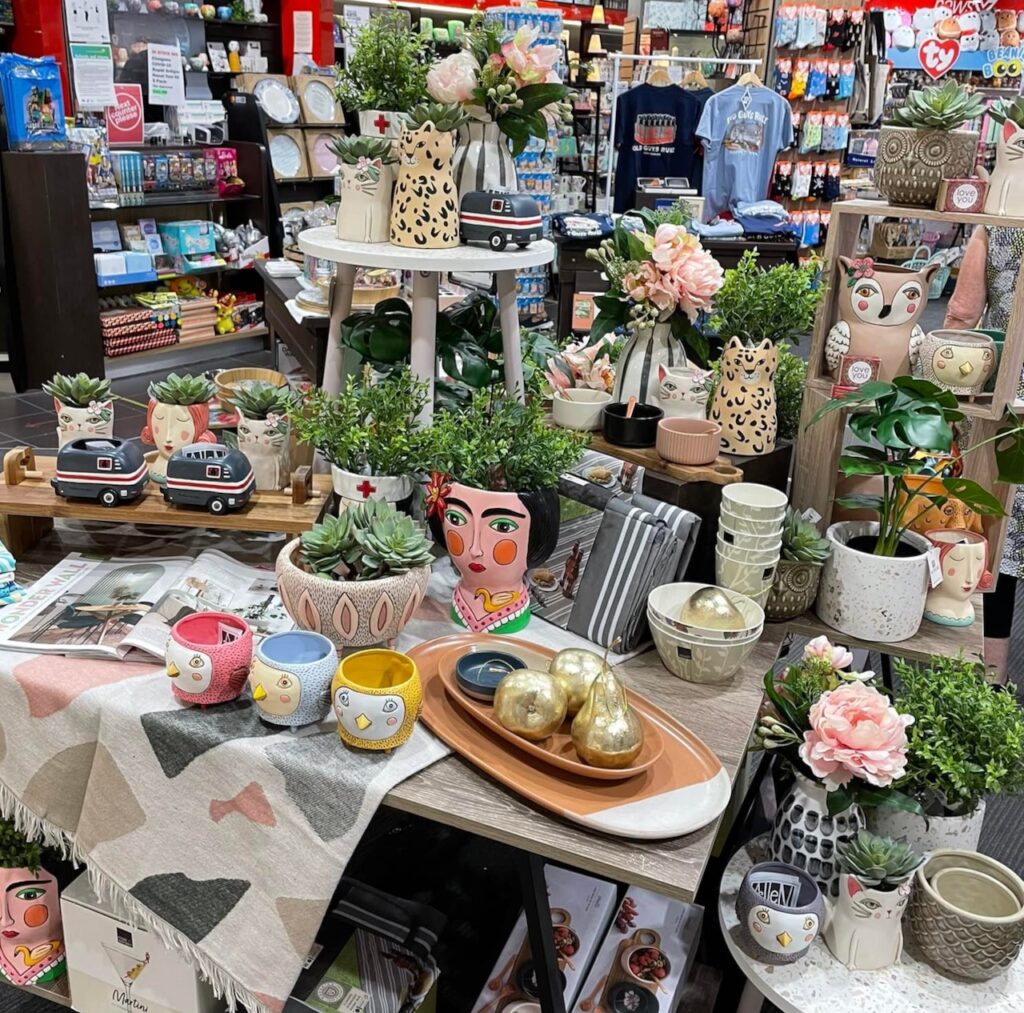
This display is from one of my shops from yesterday. It speaks to this desire to pitch what we are not known by most for. It speaks to a freshness and a warmth if you will outside of what may be associated with shopper assumptions re a newsagency.
The mix of colours, textures, product categories and gifting occasions pitches a diversity that we think will help us attract people who might otherwise have passed the shop by. We are really happy with the mix. Quite proud actually.
This approach to outside traditional newsagency category pitching at the front of the business is easier for us given that we don’t have lottery products. While we are asked daily (ugh!) by people who tend to not look around themselves, we are getting more people asking about gifts they’d like to give.
This display at the front of the shop will remain in this form for no more than two weeks. Then, it will start to evolve. depending on new sales and new inventory availability it may be completely replaced at that time.
Let me leave you with some sales benchmark guidance. Plenty of newsagents are doing gift revenue of two and three times their card revenue, some even more. Those doing less than their card revenue have excellent opportunity for growth and that is the key point I’d make as there are many Newsagency businesses with that opportunity on the table.
Oh, and one final point. To show what I mean by being on the lease line, look at this image as through it you can see the Coles supermarket that is opposite us.
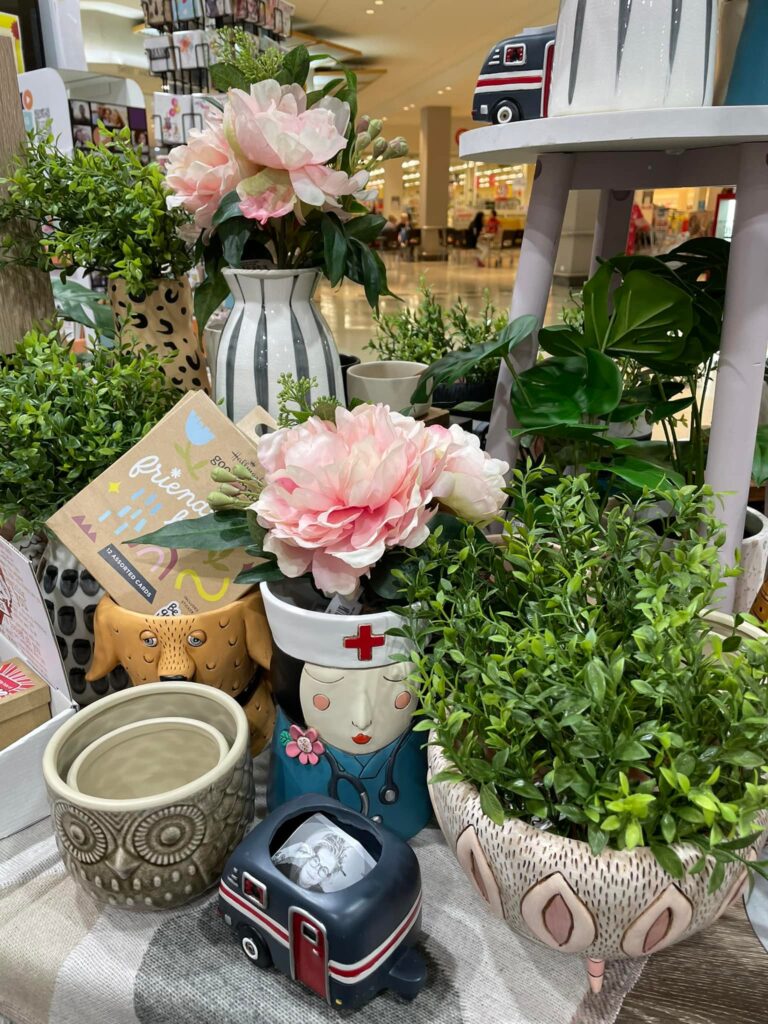
Tabcorp and Lottoland have been given 20 year licences to sell keno online. Yes, that Lottoland!
Here is the government press release:
23rd Feb 2022
Tabcorp And Lottoland Awarded Victoria’s Keno Licences
Minister for Consumer Affairs, Gaming and Liquor Regulation Melissa Horne today announced Victoria’s Keno licences have been granted to Tabcorp and Lottoland after a competitive tender process.
The two licensees will be able to provide Keno online for the first time, as well as through traditional retail outlets, backed by harm minimisation and consumer protection measures.
The two-licence model provides consumers with a greater choice and is better for business. It allows distributor venues to benefit from competition and innovation as it removes a one licensee monopoly on the market.
Tabcorp and Lottoland will both be authorised to conduct and distribute the game of Keno in eligible hotels, clubs, wagering outlets and electronically throughout Victoria.
Stronger harm minimisation and consumer protection measures will also be introduced to help promote responsible gambling for those who choose to play Keno in Victoria.
These measures come after the Government conducted a robust review into the future of Keno in Victoria, consulting with industry, community and government stakeholders.
Under the changes, the Minister for Consumer Affairs, Gaming and Liquor Regulation can issue harm minimisation directions to both Victorian and interstate Keno game providers when providing Keno to people in Victoria.
The directions will focus on key areas such as incentives, direct marketing, account closure, deposit limits, activity statements, responsible gambling messaging and maximum draw frequency.
Harm minimisation directions will be based on the National Consumer Protection Framework (NCPF) for online wagering, with additional elements to support online Keno specifically.
Applications for the new licences were assessed against a number of criteria, including corporate and individual probity, as well as the economic benefits to the state.
The 20-year licence will commence on 15 April 2022 after the current licence, awarded to Tabcorp in 2012, expires.
Quotes attributable to Minister for Consumer Affairs, Gaming and Liquor Regulation Melissa Horne
“The industry has changed significantly since 2012, with new technologies and new online market entrants, so we have updated the Keno licence to allow for a more modern approach.”
“These changes will benefit businesses, while also ensuring stronger harm minimisation and consumer protection measures are in place so those who play Keno in Victoria can gamble responsibly.”
Hmm, I’m not sure how the changes benefit current lottery retailers.
Lottery Daily has their take on this:
Tabcorp and Lottoland have been awarded dual 20-year licences to offer Keno games in the Australian state of Victoria.
The new licences, which take effect from 15 April 2022 and run to 2042, are a return to the pre-2012 structure of two authorised operators in the Australian state, before Tabcorp’s 10-year exclusivity.
While Tabcorp’s current licence only covers retail, the new agreement also stretches to cover digital services after the company paid an up-front fee of $25m.
Sue van der Merwe, Managing Director of Lotteries & Keno at Tabcorp, commented: “Tabcorp is pleased to continue its partnership with the Victorian Government, with the longer term and expanded channel flexibility offered under this licence.
“The new structure will allow us to continue offering Victorian players a world class Keno product and responsibly grow the game further, backed by our extensive retail and brand presence and the expertise gained from our existing Keno online business.”
Lottoland also shared its enthusiasm over the deal as it announced its online platform KenoGo is gearing up for launch.
Nigel Birrell, CEO of Lottoland, added: “We are thrilled to have been granted a Keno licence by the Victoria State Government and look forward to launching KenoGo in 2022.
“I would like to personally thank the Minister for Gaming and Liquor Regulation, Melissa Horne, and the Victorian State Government for awarding the first dual licence in Australia.
“Most importantly, this licence means that consumers in Victoria will be able to enjoy Keno online on their smartphone or computer for the first time ever, with new gaming experiences and greater choice through Lottoland.”
The move to award dual licences follows the Victorian government’s Keno Licence Review and subsequent invitation to apply for a Keno licence process.
My view is there is no upside trend for over the counter lo9ttery purchases. yes, I understand big jackpots, l like tonight’s $120M Powerball will spike traffic, but not as much as they used to … because … online.
It’s Thursday morning. We have had our two magazine arrival staff members at the shop since 6am, waiting. Then, an hour and a half later, we get notified.
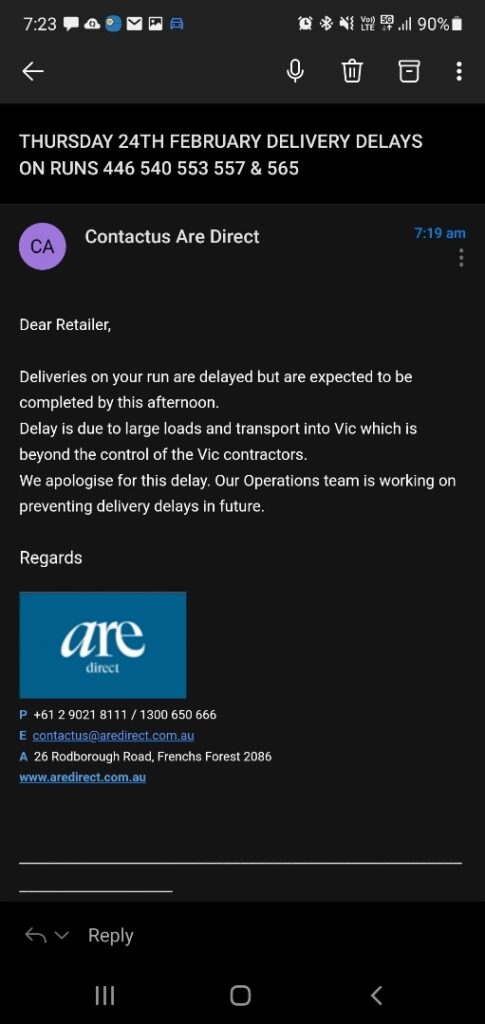
For years, Gotch managed pitched excuses, reasons why magazine distribution was challenges. Then, it was Ovato making similar pitches – the name change achieved nothing. Now, under new owners, well, here we are … waiting for magazines.
It’s a one-way relationship, and here’s why I say that. Their starting position when a newsagent reports short supply is that they do not believe you. It can take 3 ro 4 contacts to progress a claim. But, sometimes, you’re not successful,. even though know the magazines were not delivered.
One of my shops, one I bought just before Christmas 2021, does $380,000 a year in magazine sales. The distribution mess in Melbourne overseen by Are Direct is commercially harmful. Publishers should be screaming at them.
Footnote: I appreciate not everyone is impacted by this. Right now, it appears to be Melbourne focussed.

Source: https://twitter.com/melaniebrockjpn/status/1496233950020501504?s=20&t=55FvZflhb1xYXIEdOj8-qw
57% year on year growth achieved by Amazon.
Amazon has become one of the leading online marketplace in Australia in just four short years, zooming ahead of rivals such as Catch and Kogan during the COVID-19 lockdowns.
Amazon’s sales revenue hit A$1.75 billion in 2021, due to its “the everything store” status, coupled with a hefty streaming offering through Amazon Prime. In 2020, revenue more than doubled to reach A$1.12 billion.
Amazon.com.au, the online store portion of Amazon’s local business, generated sales of $883 million in 2021, a huge leap from 2020’s $517 million.
Amazon Prime memberships accounted for $155 million, and is a fast-growing arm of the local Amazon enterprise. In 2019, the nascent streaming service made just $35.4 million in Australia.
“Revenue from related parties”, which accounts for royalties from Aussie shoppers buying via international arms of the Amazon store, reached $471 million, up from $371 million.
Now, if only they paid a decent amount of tax.